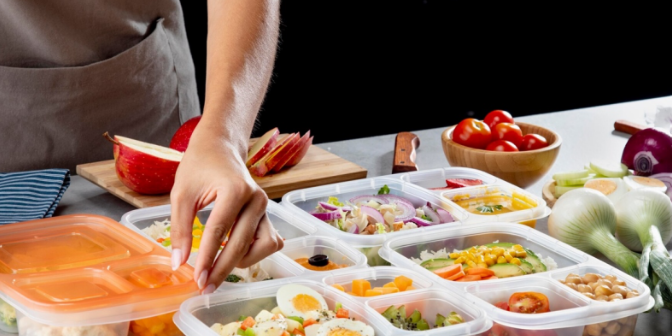- Batch cooking’ involves dedicating a day to cooking enough food to eat for the rest of the week. Its goal is to save time and effort by making it easier to plan balanced meals.
- Although it has many advantages, there are some recommendations to keep in mind when putting it into practice to ensure that the preparations are safe and healthy, avoiding potential foodborne illnesses.
If you have little time to cook but don’t want to give up homemade food, the answer lies in ‘batch cooking’. Although this technique was developed in industrial kitchens, it has become very popular in households because it allows for reduced effort without compromising a healthy diet. In fact, it has been done for generations, but now it has been refined and improved, offering an effective alternative to daily preparation. From the Silestone Institute, we provide you with the key tips to do it hygienically and safely.
Safe Batch Cooking in 10 Tips
- Shopping: Purchase fresh ingredients, preferably seasonal, that can be stored well, such as fruits and vegetables without bruises or blemishes.
- Cleaning and Hygiene: Ensure the hygiene of your hands, as well as all work surfaces, utensils, and equipment before starting to cook. Use separate chopping boards for different types of food (meats, fish, vegetables, etc.) to avoid cross-contamination.
- Ingredient Preparation: Take time to wash, chop, remove any inedible or dirtier parts, and prepare the ingredients as needed.
- Storage: Once meals are ready, allow them to cool down; this process should never exceed 2 hours and can be reduced by dividing the food into smaller portions. Do not place hot food in the fridge.
- Containers: Use airtight containers such as tupperware or jars for storing portions or use freezer bags or trays with closures. Label each one with the name and date of preparation. Refrigerate or freeze as appropriate.
- Freezing: To store meals for longer periods, place the portions in the freezer, following the proper guidelines for freezing and defrosting food.
- Consumption: As the week progresses, take the necessary portions from the refrigerator or freezer and heat them thoroughly and evenly. Avoid reheating food multiple times and do not reuse leftovers.
- Safe Defrosting: Defrost food in the refrigerator overnight. If you need to defrost quickly, you can use the microwave, but keep in mind that the heating will be less even.
- Proper Heating: Heat cooked dishes thoroughly to an internal temperature of at least 70°C throughout the food. For soups, broths, and sauces, bring them to a full boil.
- Storage Time: This will vary depending on the food and storage conditions, although it is recommended to consume prepared meals within a maximum of 3 days and frozen meals within 3 months.
Control the Temperature
It is generally recommended to consume freshly prepared dishes immediately to minimize risks. However, in the case of ‘batch cooking’, storage times are extended. Therefore, it is essential to manage the temperature correctly, avoiding at all costs keeping food at lukewarm temperatures to prevent the proliferation of microorganisms:
- Keep both ingredients and cooked dishes refrigerated between 0-4°C or frozen at least at -18°C.
- Cook at over 65-70°C, and if the preparation does not require cooking, such as salads, it is advisable to disinfect vegetables beforehand with food-grade bleach and drinking water.
